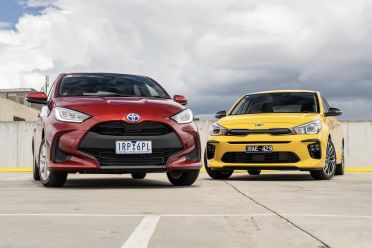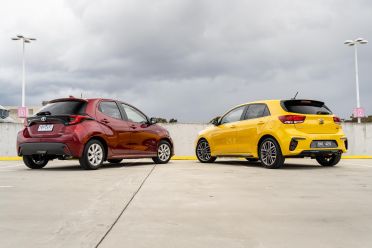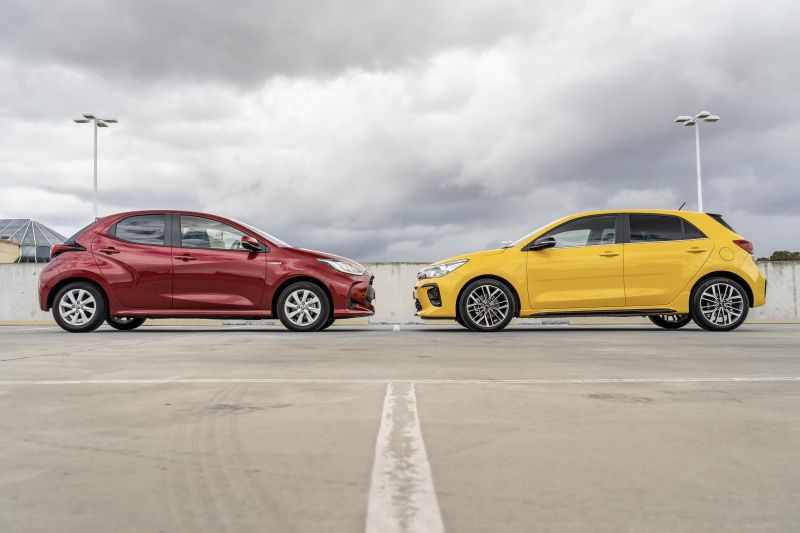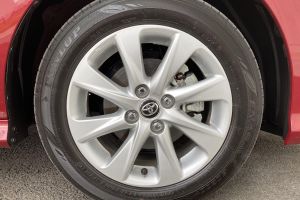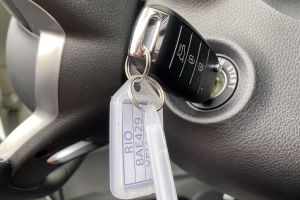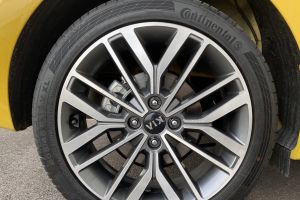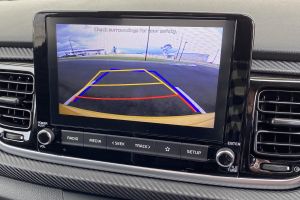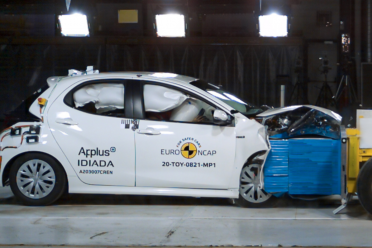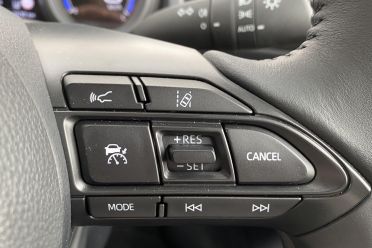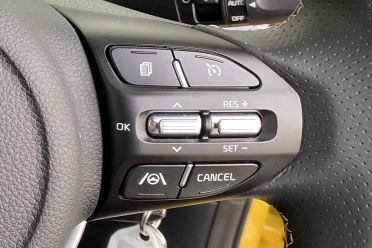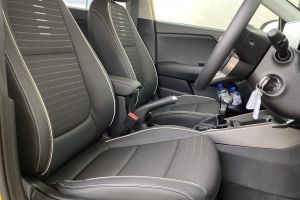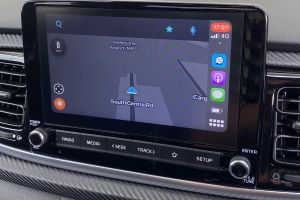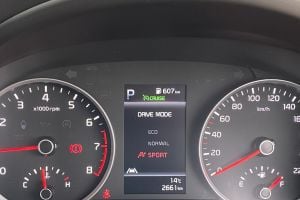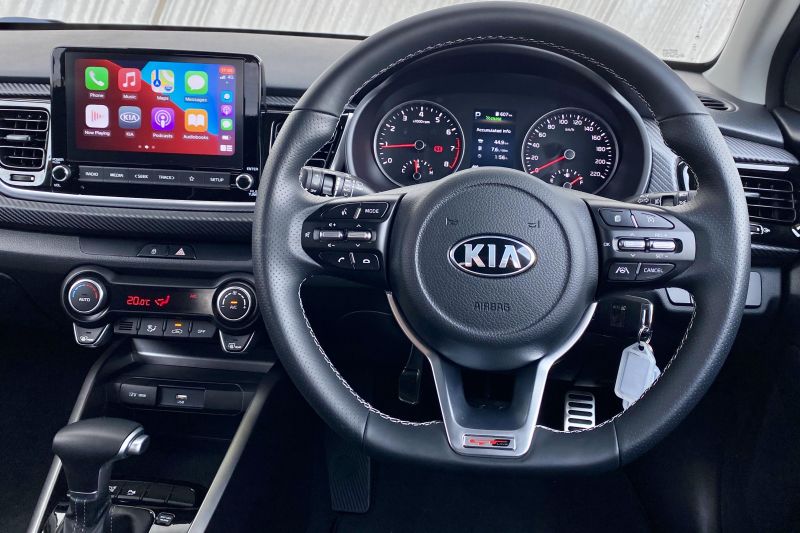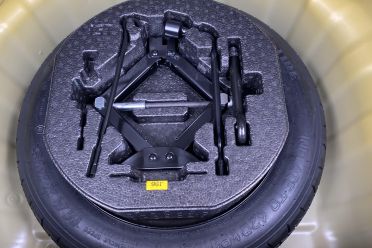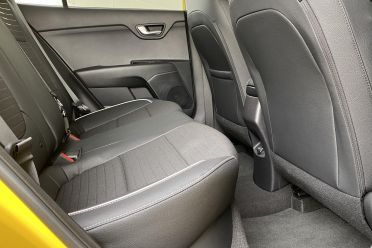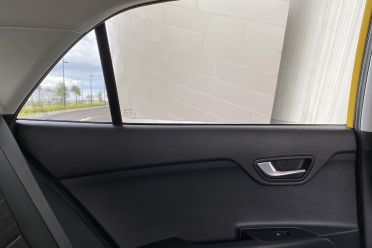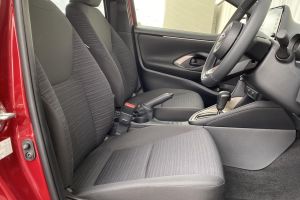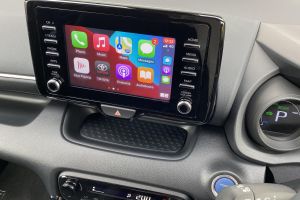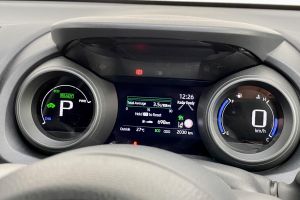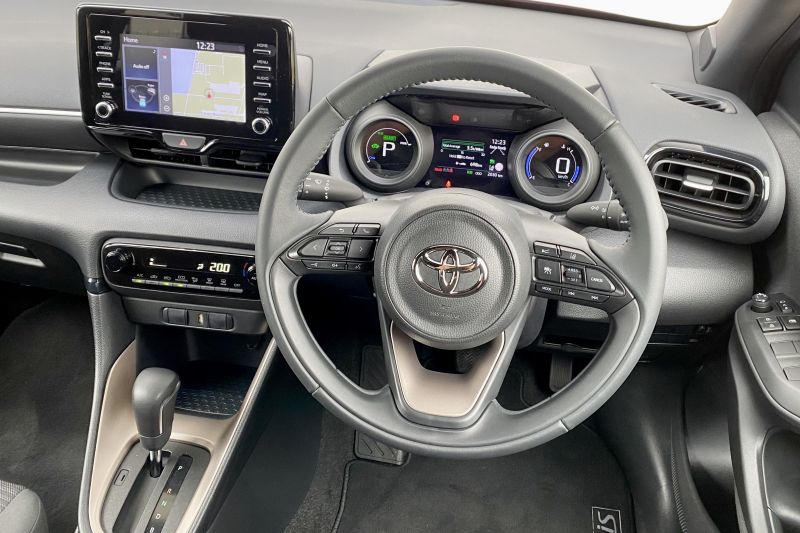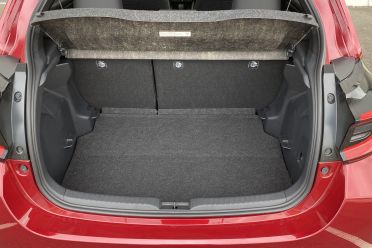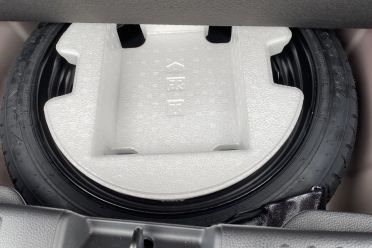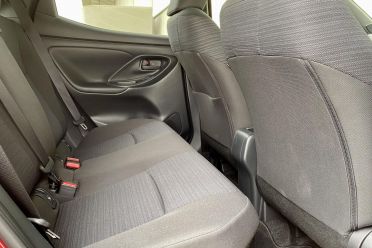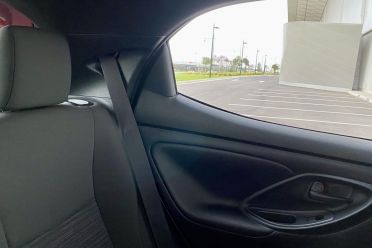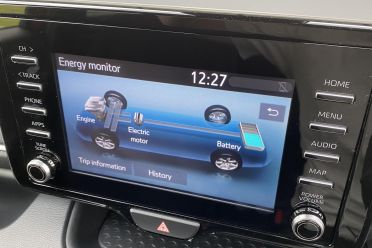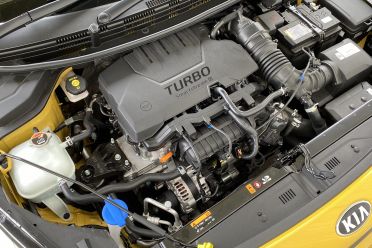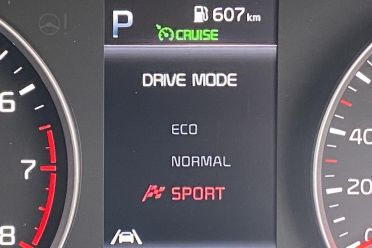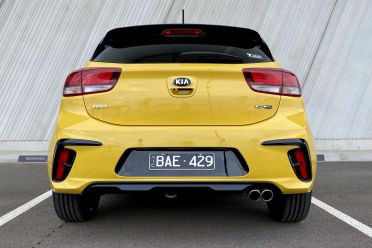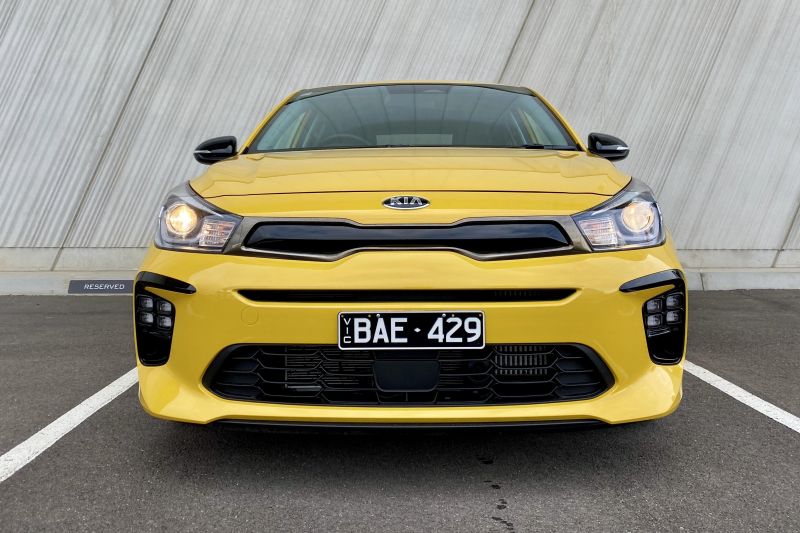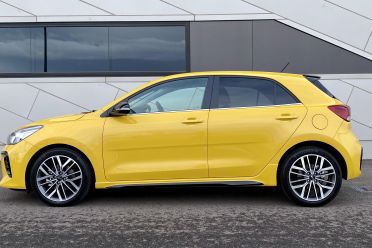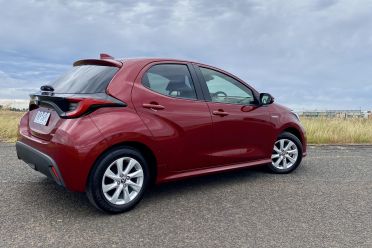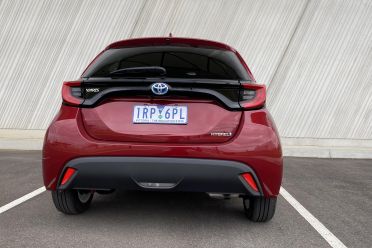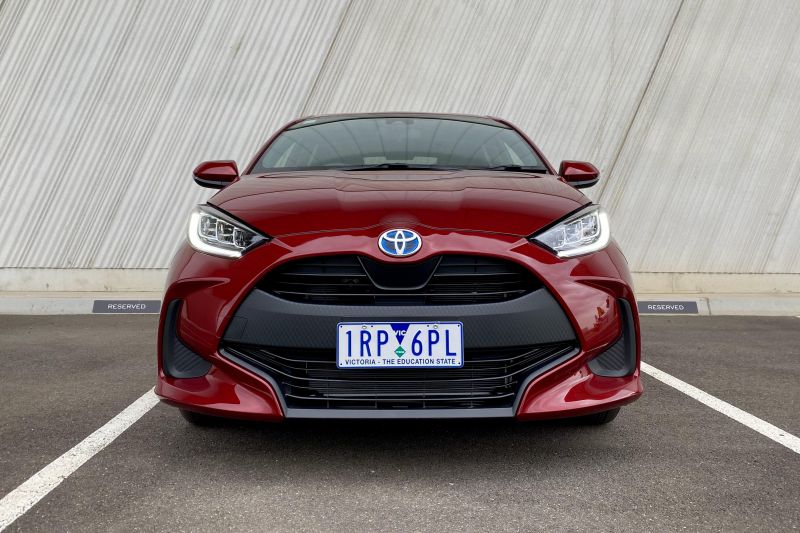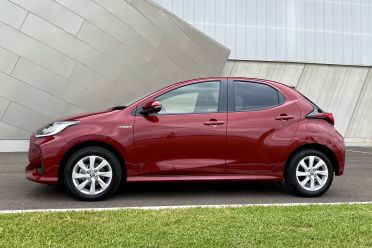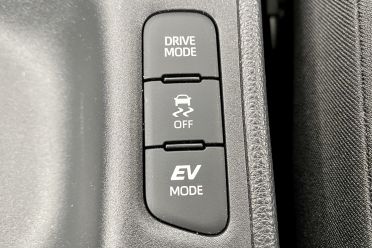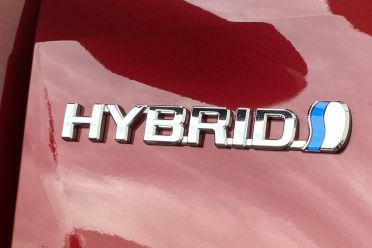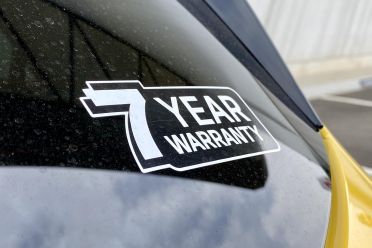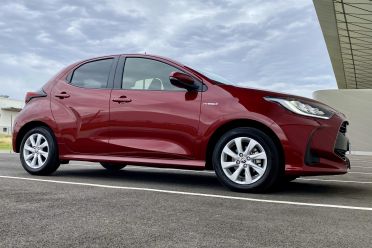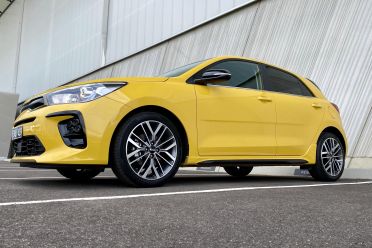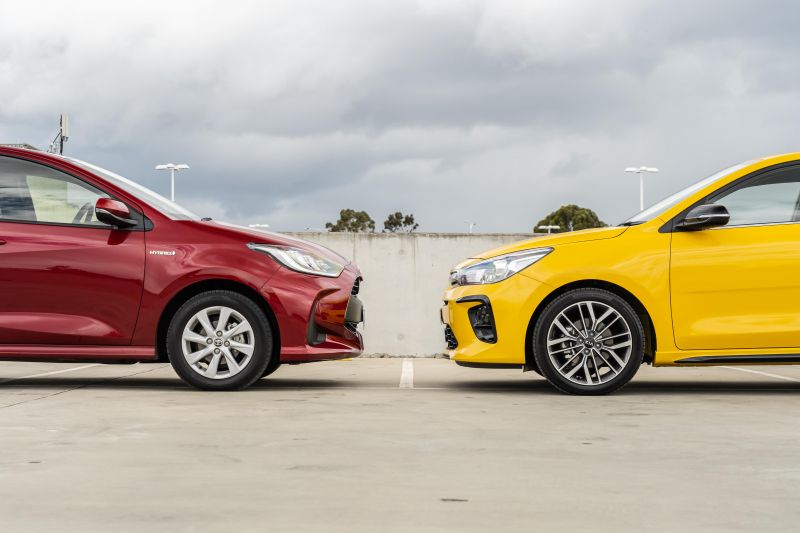To say the new-generation Toyota Yaris is an upgrade on its predecessor in terms of driving dynamics, cabin tech, and fuel economy is an understatement and a half.
Unfortunately, all these substantial improvements come with a cost. As such, the new iteration of Toyota’s smallest car is really pushing the boundaries of acceptable pricing.
We recently borrowed a mid-range Yaris SX grade – which sits above the base Ascent Sport and below the flagship ZR – and in so doing went on the search for a competitor.
Kia’s Rio was the answer. For one, it’s been recently updated and needs a revisit. And two, alongside the cheap-and-cheerful MG 3, has become the light-car segment’s top-seller in recent times.
The version we’re driving here is the top-of-the-range GT-Line, which is a sharp-looking little hatch with a bit of Euro flair (albeit one made in Korea) and cool tech.
How much?
On paper the price gap between this pair is (perhaps) manageable.
The Rio GT-Line is priced at $24,490 plus on-road costs, and as such bisects the Yaris Ascent Sport ($22,130 or the manual and $23,630 for the automatic) and Yaris SX ($27,020, auto-only).
However, the gap grows if you go off the real world quotes on each manufacturer’s website. Kia covers a great chunk of your on-road charges, and as such sells the Rio GT-Line for $24,990 drive-away. Toyota doesn’t, and so the Yaris SX is $31,000 drive-away.
In both cases, it’s about $500 for metallic or premium paint colour choices.
That’s for the regular Yaris petrol. But since the Rio GT-Line comes with its own unique small turbo engine, there was an argument to equip the test Yaris with its more powerful yet efficient ‘premium’ drivetrain option – the hybrid.
Thus specified, you must add another $2000 and take the estimated drive-away price to $32,990. Which means in the real world there’s a sudden price premium of $8000 to reckon with. Eep.
With this clear problem firmly in mind, I’ll mention throughout this story the features you settle for if you stick to the Yaris Ascent Sport, and also mention the performance figures for the cheaper SX non-hybrid offering too.
What do you get?
The Kia Rio GT-Line comes standard with 17-inch alloy wheels, halogen headlights, LED daytime running lights, rear-seat privacy glass, fabric seats, digital climate control, an 8.0-inch touchscreen, wireless Apple CaPlay and Android Auto, Bluetooth/USB, six speakers, a reversing camera, and passive cruise control.
The base Toyota Yaris Ascent Sport comes standard with 15-inch steel wheels, halogen headlights, LED daytime running lights, no privacy glass, fabric seats, manual A/C, a 7.0-inch touchscreen, wired Apple CarPlay and Android Auto, digital radio receiver, Bluetooth/USB, six speakers, a reversing camera, and active cruise control.
Above this, the SX we’ve got on test adds 15-inch alloy wheels, LED headlights, an auto-door-unlocking proximity key fob with button start, privacy glass, climate control, and factory satellite-navigation.
So, you do get some more equipment for the price gap, as you’d expect.
| Kia Rio | Toyota Yaris | Toyota Yaris | |
|---|---|---|---|
| GT-Line | Ascent Sport | SX | |
| List price | $24,490 | $23,630 | $27,020 – $29,020 |
| Wheels | 17″ alloy | 15″ steel | 15″ alloy |
| Headlights | Halogen | Halogen | LED |
| DRLs | LED | LED | LED |
| Proximity key, button start | No | No | Yes |
| Privacy glass | Yes | No | Yes |
| Seat trim | Fabric | Fabric | Fabric |
| A/C type | Climate control | Manual | Climate control |
| Screen size | 8.0″ | 7.0″ | 7.0″ |
| Sat-nav | No | No | Yes |
| Apple CarPlay | Wireless | Wired | Wired |
| Android Auto | Wireless | Wired | Wired |
| DAB | No | Yes | Yes |
| Bluetooth/USB | Yes/Two | Yes/One | Yes/One |
| Speakers | 6 | 6 | 6 |
| Camera | Rear | Rear | Rear |
| Cruise control | Passive | Active | Active |
Are they safe?
Both cars come standard with dual front and front-side airbags, as well as full-length curtain ‘bags. Each additionally has outboard ISOFIX and top-tether anchor points for child seats.
Each car also comes with autonomous emergency braking (AEB), lane-keeping aids, and driver attention alert.
Above this, all versions of the Yaris add centre airbag protection to mitigate head strikes between driver and passenger in side collisions.
The Toyota also has extra active safety equipment including lane-centring assist, intersection AEB, road sign assist, and active cruise control.
It’s safe to say the Yaris’s safety tech is class-leading: it can match the speed of a car ahead, steer you between road lines, brake in emergencies, and use a camera to tell you the speed limit in real time. Pretty clever.
The Kia Rio carries a five-star ANCAP crash rating (35.52 out of 37) against 2017 test criteria, so you can be sure it’s safe. But the Yaris was the first car in its class to ace ANCAP’s tougher 2020 test.
What are they like inside?
Kia:
The Kia’s interior has a few touches that separate it from more fleet-friendly fare further down the range. The seats have leatherette bolsters and nicely patterned and textured cloth inserts. The white stitching and piping is a nice touch too.
There is also a plastic piece along the dash designed to vaguely resemble a piece of carbon fibre, which livens up an otherwise bland space full of hard black and grey plastics. The leather gear shifter wrap is a nice touch, so are the steel-capped pedals.
The steering wheel has perforated leather hand grips and contrast stitching, plus a flattened bottom and silver ‘GT Line’ label. The left spoke contains buttons to control audio functions and the right, cruise control and lane assist.
Behind the wheel – which adjusts for reach and rake alike – sits a set of analogue gauges bookending a digital screen that shows your speed, trip data, active safety system status, and more.
The centre touchscreen has shortcut buttons below it, and if anything is a little slicker to use than the Toyota’s. The fitment of wireless Apple CarPlay is fantastic future-proofing, though it lacks the Yaris’ sat-nav (excluding phone mirroring) and DAB.
Frustratingly, the CarPlay integration proved glitchy. An error message saying “iPhone is not responding. Please reconnect it and try again” would regularly crop up, and while it didn’t kill the audio stream, it did require you to press ‘ok’ and return to the menu you were at. An irritating distraction I’ve never experienced in another car.
Below this sits a simple climate control display with bright red font. There are two open shelves below this, augmenting the centre tunnel cupholders and covered console/arm rest. There’s a decent glovebox, bottle holders in the doors, and a sunglasses cubby.
The rear door aperture opens wider, and there’s a bit more headroom, foot room and legroom. I’m 194cm and actually fit behind the front seat which was set to a driving position that I could deal with.
There’s a rear USB point and grab handles, but no rear flip down armrest or vents. It’s still a nicer back row than than the Toyota’s – more useable.
The boot measures 325 litres (55L more than the Yaris) and there’s a detachable cargo shelf. Under the loading floor is a temporary space-saver spare wheel.
Toyota:
Entry to the Yaris is much easier on account of the proximity key, which also makes the side mirrors fold outward upon activation.
As with the Kia, the majority of surfaces are hard to the touch – easier to clean, less nice from a tactile perspective – though thankfully the leather wrapped wheel is nice to hold. Everything is screwed together with typical Toyota excellence, even on silent EV mode there’s nary a trim squeak.
It’s not exactly an exciting design, but our lots of drab black and grey hues. But the fabric door cars and white plastic inserts add some joy, and the dark headlining is a bit classy.
The seat adjusts for height and slides on rails, while the wheel moves outwards, and up-and-down. The left spoke has buttons for audio and voice control whole the right-side buttons work the cruise control or skip the track.
The instruments contain two circular screens – left side shows the drivetrain status and the right your speed – while between them is a small screen showing fuel economy, hybrid system diagrams, the status of the active safety systems, and the like.
The high mounted touchscreen is augmented by buttons, and in Toyota style has a home screen that allows a modicum of choice. I had the map in the large tile section, and the audio channel and hybrid system diagram in the small ones.
The reversing camera is clear and has moving guidelines, there’s digital radio, and Apple CarPlay and Android Auto (wired).
Below this screen sits your climate controls, and the single USB point. The dash also contained three large open cubby sections which, alongside the centre cupholders and door bins, bolster the practicality. There’s no covered centre control and armrest though.
The back doors are quite small, and the entry aperture ditto. But there’s a surprisingly decent amount of rear legroom (I could technically fit behind myself if I had the front seat at the very edge of comfort), though headroom is tight and the C-pillars make you feel a bit hemmed in.
There are no rear seats vents, USB points or overhead grab handles, not is there a centre armrest with cupholders. At least the Isofix points are clearly labelled. Let’s be honest, few prospective buyers will be ferrying four people around more than occasionally.
The boot measures 270L, and there’s a detachable cargo cover. The floor also has two height settings, and a space-saving spare wheel below.
| Kia Rio | Toyota Yaris | |
|---|---|---|
| Length | 4070mm | 3940mm |
| Width | 1725mm | 1695mm |
| Height | 1450mm | 1505mm |
| Wheelbase | 2580mm | 2550mm |
| Boot | 325 litres | 270 litres |
What’s under the bonnet?
The 2020 Rio GT-Line had 88kW, but the 2021 model has been de-powered to 74kW in exchange for a fuel economy improvement of 0.1L/100km and a similarly small CO2 reduction. Hmm.
It’s a 1.0-litre turbocharged three-cylinder mated to a seven-speed dual-clutch automatic transmission. In addition to 74kW of power, it makes 172Nm of torque from just 1500rpm, which means it gives you all its muscle just off idle point.
It’ll drink 91 RON fuel, and averages a claimed 5.3 litres per 100km on the combined cycle. Its fuel tank is 45 litres. That’s compared to the Toyota’s 36L tank.
The base Yaris engine is a 1.5-litre naturally aspirated three-cylinder pushing out 88kW and 145Nm, but here we have the $2000 pricier hybrid.
This setup pairs a 67kW and 120Nm version of the same 1.5-litre engine with a 59kW and 141Nm electric motor, powered by a lithium-ion battery charged though cordless energy recuperation, and mated to an electronically controlled ‘e-CVT’ transmission.
You do not add the two output sources together because they never work concurrently at 100 per cent. Peak power is 85kW and peak torque is not mentioned.
Crunching the numbers, it makes sense. It costs $2000 more, but its super-low 3.3L/100km combined-cycle fuel claim is 1.6L/100km superior to the non-hybrid.
At fuel prices of $1.50 per litre, this saves you $2.40 every 100km driven, meaning at current fuel prices you’ll pay the impost off after about 80,000km. If fuel prices climb, this gap shrinks. If fuel prices fall, vice-versa.
Then there’s the likely higher resale value of the hybrid to consider, as electrified vehicles grow their market share.
| Kio Rio | Toyota Yaris hybrid | Toyota Yaris petrol | |
|---|---|---|---|
| Displacement | 1.0-litre | 1.5-litre | 1.5-litre |
| Cylinders | 3 | 3 | 3 |
| Outputs | 74kW/172Nm | 67kW/120Nm | 88kW/145Nm |
| Hybrid motor | N/A | 59kW/141Nm | N/A |
| Max. system | 74kW/172Nm | 85kW | 88kW/145Nm |
| Transmission | 7-DCT | e-CVT | Belt CVT |
| Driven wheels | Front | Front | Front |
| ADR fuel use | 5.3L/100km | 3.3L/100km | 4.9L/100km |
| Fuel standard | 91 RON | 91 RON | 91 RON |
| Power to weight | 61.8kW/t | 76.6kW/t | 83.4kW/t |
How do they drive?
Kia:
The Kia looks a little sporty, and this ‘vibe’ carries over to the driving experience. The ride is firmer than the Toyota’s, down in part to the suspension and in part to the slimmer sidewall tyres (those big wheels look the part, right?).
But it’s relatively fun to whip through corners or around roundabouts, thanks to its relatively lithe 1197kg weight. Like other Kias, there’s a degree of Australian-market specific suspension calibration dialled in. It’s not a hot hatch, but it has some pep.
The one area where the ride is less suitable that Toyota’s is the tendency to crash a little when the car impacts potholes or speed bumps. The Yaris soaks these up nicely, without sacrificing good body control that keeps the car fairly flat in corners.
The Kia has a few driving modes to play with, and strangely in the Sports setting the electric steering system’s resistance is actually reduced. This is good because the feel is a bit too heavy in the other modes next to the pinky-finger-friendly Yaris.
The Rio’s Continental tyres are premium bits of rubber, and they grip well. It’s a small way to add some stability and grip. However, over our 100km/h test it proved 2dB louder over the same road compared with the Yaris.
The brakes are larger than the Yaris’s – 280mm ventilated discs at the front and 262mm solid discs at the rear – and it pulls up well.
The engine has that characteristic three-cylinder thrum at idle – when the stop/start system isn’t activated. It also had a strong-ish mid-range, but it’s not as rapid off the mark or as swift once rolling as the surprisingly quick Yaris.
The DCT isn’t too bad, though there are some occasional moments of hesitation in heavy traffic, whereby the engine vibrates or the body jerks fore and aft. If you’re in Sports mode, this is particularly noticeable.
In terms of fuel economy, I averaged 6.7L/100km, against the 5.3L/100km claim.
The shifts once you’re rolling are quite quick, though the 0-100km/h sprint times I managed of around 12 seconds are far from rapid. I dipped below 10 sec in the eco-friendly Toyota, by contrast.
In short, the Kia’s tyres are gripper than the Toyota’s, its brakes a little better, and its handling in corners is at least as good. But it’s louder, slower, less efficient, and less comfortable over sharp bumps.
Toyota:
Toyota once made boring cereal boxes on wheels that handled corners with duress. But the company’s newest products unanimously drive with agility and verve.
The Yaris is terrific fun to punt about, with light yet direct steering (2.7 turns lock-to-lock), good body control, eager and rapid directional changes, and a quite comfortable and cosseting ride quality thanks to damping with well-controlled rebound. The 150mm of clearance (10mm more than the Kia’s) is also quite good for steep gutters.
Over our 100km/h test it proved 2dB quieter over the same road compared with the Kia.
The only dynamic foible really is the low-rolling resistance eco tyre setup – they squeal and screech a little too eagerly if you attack a corner with any eagerness whatsoever. That’s the trade-off…
On paper, the fact the Yaris has 200mm rear drum brakes (plus 255mm ventilated front discs) looks like a retrograde step, however it only weighs 1085kg (60kg more than the non-hybrid), and it stopped sufficiently on my test.
The hybrid engine is just great for city commuters. Push the blue start button and there’s rarely a sound, because so long as there’s any battery charge (remember, you don’t plug this car in, the motor itself converts brake and kinetic energy into charge) it takes off using silent electric power only. Ditto in reverse.
At speed below 40km/h such as in car parks it remains silent for a time, and once the engine fires up you’re already rolling so it smoothes out nicely. Toyota has done a great job minimising engine-rev-flaring and harshness on heavy throttle applications.
When you’re rolling at speeds of 80km/h or below and not tackling a gradient, the engine can again switch off and allow the motor to drive the vehicle.
You have a few modes to mess about with, If you pull the gear stick to the bottom of its travel into ‘B’ mode, it ramps up the energy recuperation and adds some resistance when you lift off the throttle.
The Power mode button gives you a little more pep off the line, whereas Eco mode dulls that throttle to preserve dinosaur juice. The EV mode is pretty useless, since above 40km/h under throttle it switches off.
It’s punchier than a Corolla hybrid off the mark, and while a 0-100km/h time of between 9.5 and 10 seconds over a few runs isn’t rapid, it’s super quick to 60km/h, and even to 100 still about two seconds faster than the ostensibly sporty Kia.
I did one economy-minded fuel consumption run driving like Pop heading to the bowls club and managed 2.9L/100km, and then drove the wheels off the car, stomping on the throttle from every red light, and got 5.1L/100km. Which is super low.
The 36L fuel tank gives you a theoretical driving range north of 1000km between refills. it really is an ideal city companion with dummy-proof technology that requires no change of habits.
| Kio Rio | Toyota Yaris | |
|---|---|---|
| Turning circle | 10.2m | 10.2m |
| Ground clearance | 140mm | 150mm |
| Weight | 1197kg | 1055-1110kg |
| Front brakes | Ventilated disc | Ventilated disc |
| Rear brakes | Solid disc | Drums |
| Front suspension | MacPherson strut | MacPherson strut |
| Rear suspension | Torsion beam | Torsion beam |
| Tyres | 205/45 | 185/60 |
Cost of ownership
The Kia comes with an industry-topping seven-year and unlimited distance warranty. We know Mitsubishi’s warranty is ten years, but that’s contingent on dealer servicing.
The servicing intervals are annual or 10,000km (whichever comes first), and the first seven visits are capped at: $283, $484, $338, $704, $319, $602, and $569. Grand total of $3299, taking you out to seven years or 70,000km.
Toyota’s warranty is five years and unlimited mileage, however if you use Toyota dealers for servicing you get seven years of engine cover and 10 years of hybrid battery cover.
The service intervals for both engine options are annual or 15,000km, making them more customer-friendly. The first five services (taking you to five years or 75,000km) are $195 a pop, equalling $975.
The Toyota’s sixth service (six years or 90,000km) spikes to $577.92 for the hybrid for $561.73 for the petrol, and the seventh (105,000km) $369.24 for the hybrid or $426.57 for the petrol.
Based on the supplied figures, the Toyota is theoretically $2300 cheaper to keep serviced out to 75,000km – if you average 15,000km per year. There’s no mention of additional hidden costs in Toyota’s terms and conditions that I could find.
Going off the ADR fuel claims, the Yaris hybrid also uses 2.0 litres less fuel per 100km than the Rio. The cost of petrol at the time of writing ($1.50 per litre) equates to a saving of $3 per 100km, or $2250 per 75,000km.
Which means that $8000 purchase price premium is somewhat offset by somewhere around $4500 worth of projected servicing and fuel savings over a 75,000km ownership period.
Add in Toyota’s typically inflated resale values and this gap may just narrow further still. Food for thought.
CarExpert’s Pick
The Kio Rio is a sharp-looking little car with a deceptively spacious cabin, plenty of tech, and a reassuring warranty. It also looks a bargain next to the Yaris.
But for the most part, the Toyota is a better car, if you can somehow side step the purchase price gulf – a hard thing to do in the market’s most cost-sensitive segment.
It drives more smoothly, goes faster off the mark, uses less fuel, has more safety features, and is at the very least equally agile and fun to throw into corners.
It also somewhat offsets its price tag with super-low running costs, so do your sums carefully. It’s total-cost-of-ownership isn’t as outright ludicrous as that price tag might suggest, though it’s still too high.

